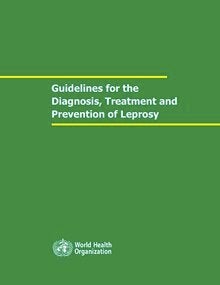Background
Leprosy is a disease that predominantly affects the skin and peripheral nerves, resulting in neuropathy and associated long-term consequences, including deformities and disabilities. The disease is associated with stigma, especially when deformities are present. Despite the elimination of leprosy as a public health problem (defined as achieving a point prevalence of below 1 per 10 000 population) globally in 2000 and at a national level in most countries by 2005, leprosy cases continue to occur. Over 200 000 new leprosy cases were reported in 2016. Therefore, guidance on early diagnosis and treatment of leprosy is essential for reducing the burden of this disease.
Leprosy is classified as paucibacillary (PB) or multibacillary (MB), based on the number of skin lesions, presence of nerve involvement and identification of bacilli on slit-skin smear. The standard treatment for leprosy involves the use of multiple (two or three) drugs; the duration of treatment, dose and number of antibiotics depend on the type of leprosy (PB or MB) and age of the patient (adult or child). Strategies to prevent leprosy
|

